The Weekly 10/13/25: Virtua Fighter at TGS, Ridge Racer On Switch 2 - Friends, it's 1994 again
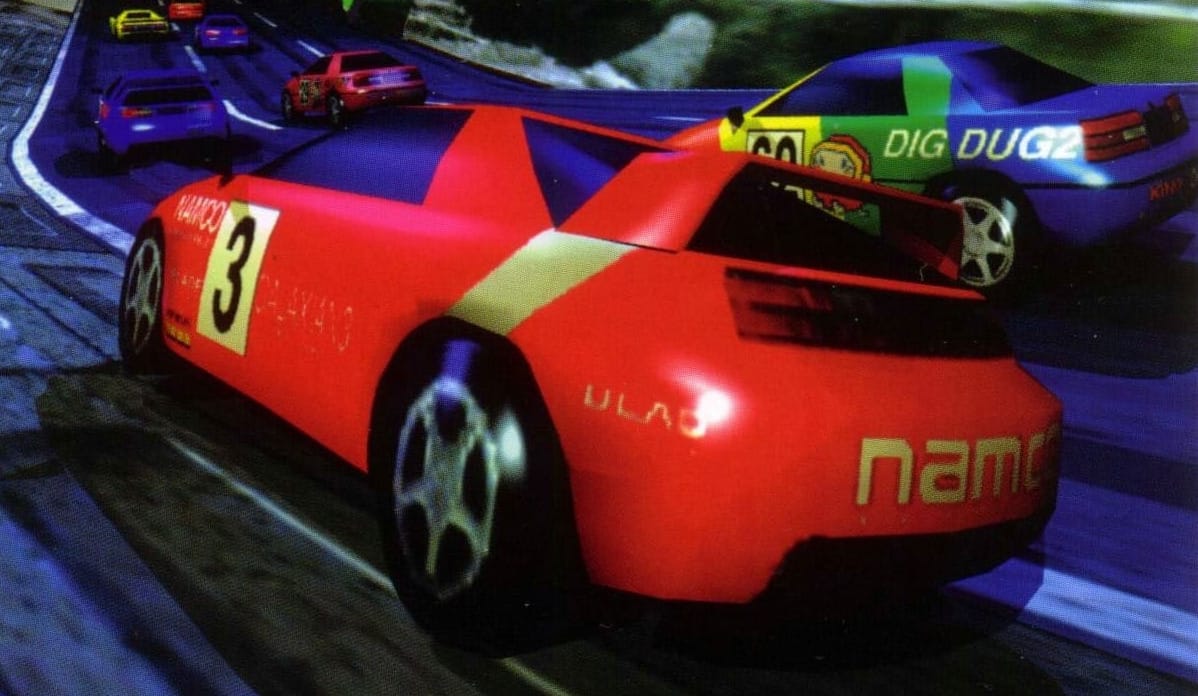
This has actually been nearly in the can from a while ago, but I took an actual nice long break– the real kind, where you don't look at anything, even if you finally got a good idea for a Kawaiikochans comic– last week. Also, the thing I came up with to make more posts in less time is actually taking lots of time as I just keep on talking about the things I'm interested in. I think that either part of the Weekly this week could just be a full-on main page post, and that raises the question of whether I should always do the Weekly. I'll figure it out.
TGS Virtua Fighter presentation coulda been a blog post
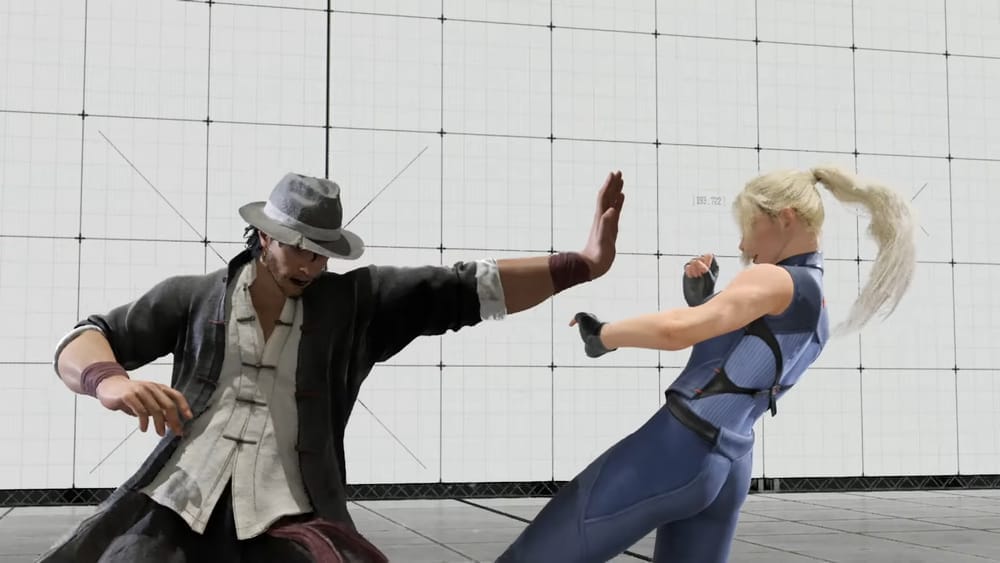
Back at Evo, the developers of the new Virtua Fighter project demoed the combat gameplay in a one-minute video. I and many other folks with genre experience descended upon this raw meat, breaking down the fight and the mechanics that might be involved: explaining to other gamers what they were seeing.
This was a shred of info, but it was pretty well-received as the clip was genuinely pretty amazing. Besides, the dev team said that there’d be more to see at Tokyo Game Show. Well, alright, that makes a lot of sense. New VF is a big-deal game, and however ubiquitous Evo is in the fighting game niche, it’s not nearly as large a stage as Japan’s biggest video games show.
The description for the TGS panel, put up a few days before the event, was “Check out our overview of the battle system in the New VIRTUA FIGHTER Project, based on recently released gameplay footage.“ Okay, a run-through of the previous video. But this is TGS, right? Certainly that couldn’t be all they had to show us.
Friends, it was. The team's VF presentation was an hour full of air. We got a slow-motion run-through of the existing video pointing out all of the new systems— even so, very vaguely— a little Q&A from the game’s Discord, an announcement of a completely different alternate battle system about which there were no details, and a twenty-second video of a new mystery character walking in the street on a rainy day. I must note: This is the second time we have seen this character, and they didn’t even see fit to show us his face.
Capped off by this cruel anticlimax, reactions to this presentation were universally negative. I’m about as big a Virtua Fighter booster as you're ever going to find, and I'm not the kind of fanboy to make excuses for my fave: I honestly felt insulted by how light this presentation was. The dev team has been training the fans to wait months for tiny drips of info like the Wolf introduction trailer, but this presentation crossed a line. We wait, we get treats, right? For that to work, there’s got to be a treat.
The details about the combat mechanics might have counted, but many players had already correctly guessed everything the devs revealed in the presentation. (I was about at 80%; I just forgot to write about part breaks.) Furthermore— and I hate to say this as a lover of the genre— a lot of the audience doesn’t care about crunchy game mechanics like they say they do, and actually wants to see new characters revealed doing flashy moves, which this presentation did not have. The video of the mystery new character might have been intended to stoke speculation— the identifying detail is when we see a flame design on his pants, implying he might have something to do with Jacky— but a twenty-second video of a mystery man walking in the street with his face obscured is not exactly hype by any definition.
Thoughtful fans have taken this whole presentation to mean that maybe New VF is not nearly as far along as we were told it was. I mean, they went to the trouble of hiring top pro player Tokido to be there just to watch last month’s video with them? Seems weird.
Personally, if the updates are going to be this weak, I’ve decided to stop thinking about New VF and wait until after they’ve released new info rather than line up for underwhelming reveals. Don’t get me wrong, I’ll be on the case when they release something substantial, but this drip is not substantial. See y’all in nine months on this one when maybe there'll be an actual trailer: I’ll be playing VF5.
Virtua Fighter 5 REVO is on Steam right now: the World Stage upgrade is coming to Steam and Xbox right before my birthday, on October 30, with a Switch 2 port to follow eventually.
I’ve been into Ridge Racer. The first one
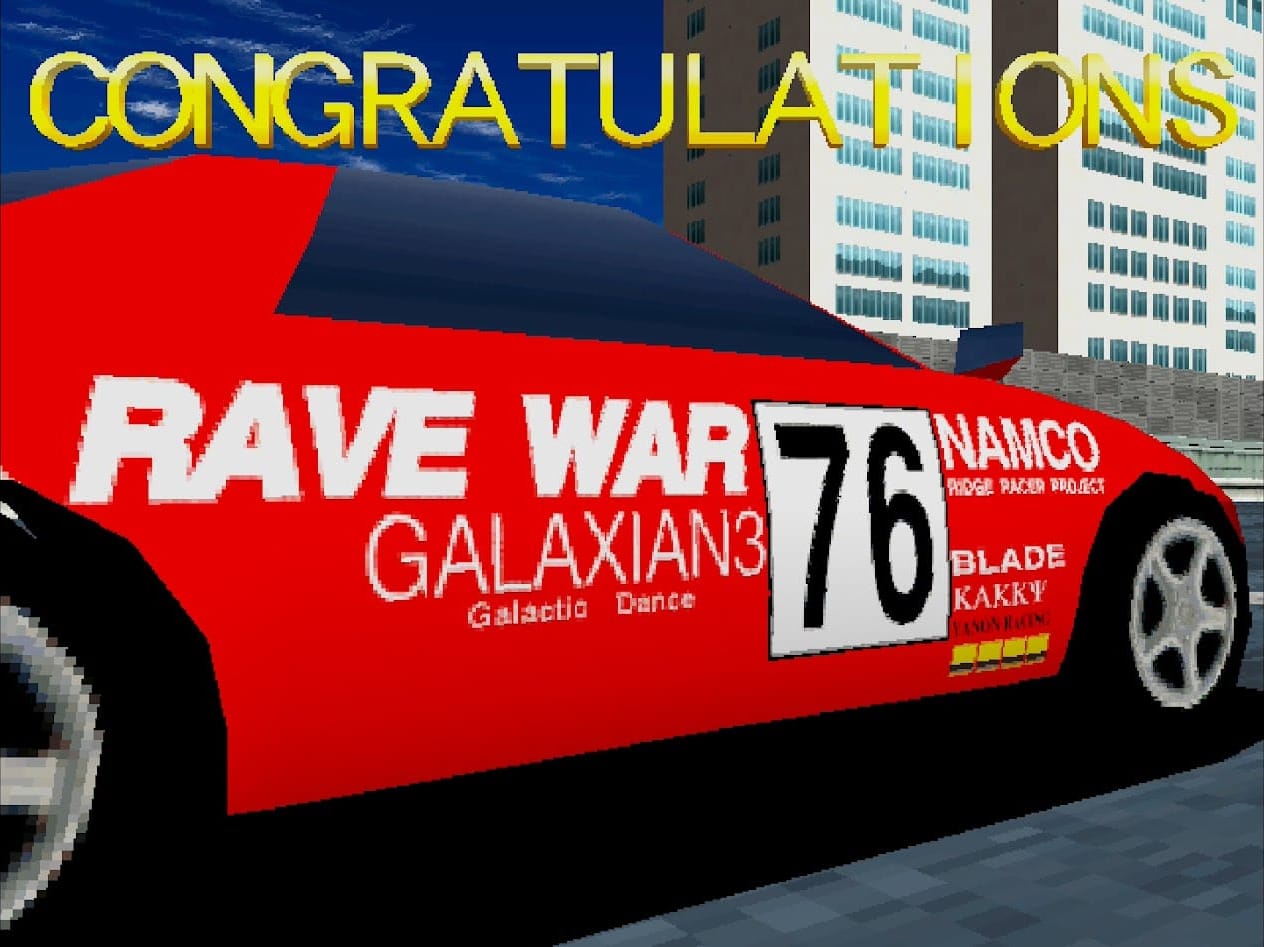
One of my favorite things about retro games is revisiting the moment of a generational leap. The first time you saw Mario running around in 3D, or the realistic human characters performing motion-captured weapon demonstrations in Soul Calibur on the Dreamcast, or the way the cinematic introduction of Final Fantasy VII seamlessly drops the camera down right into the game world. The early 3D age had its share of genuine shocks: I should know, I lived through quite a few of them.
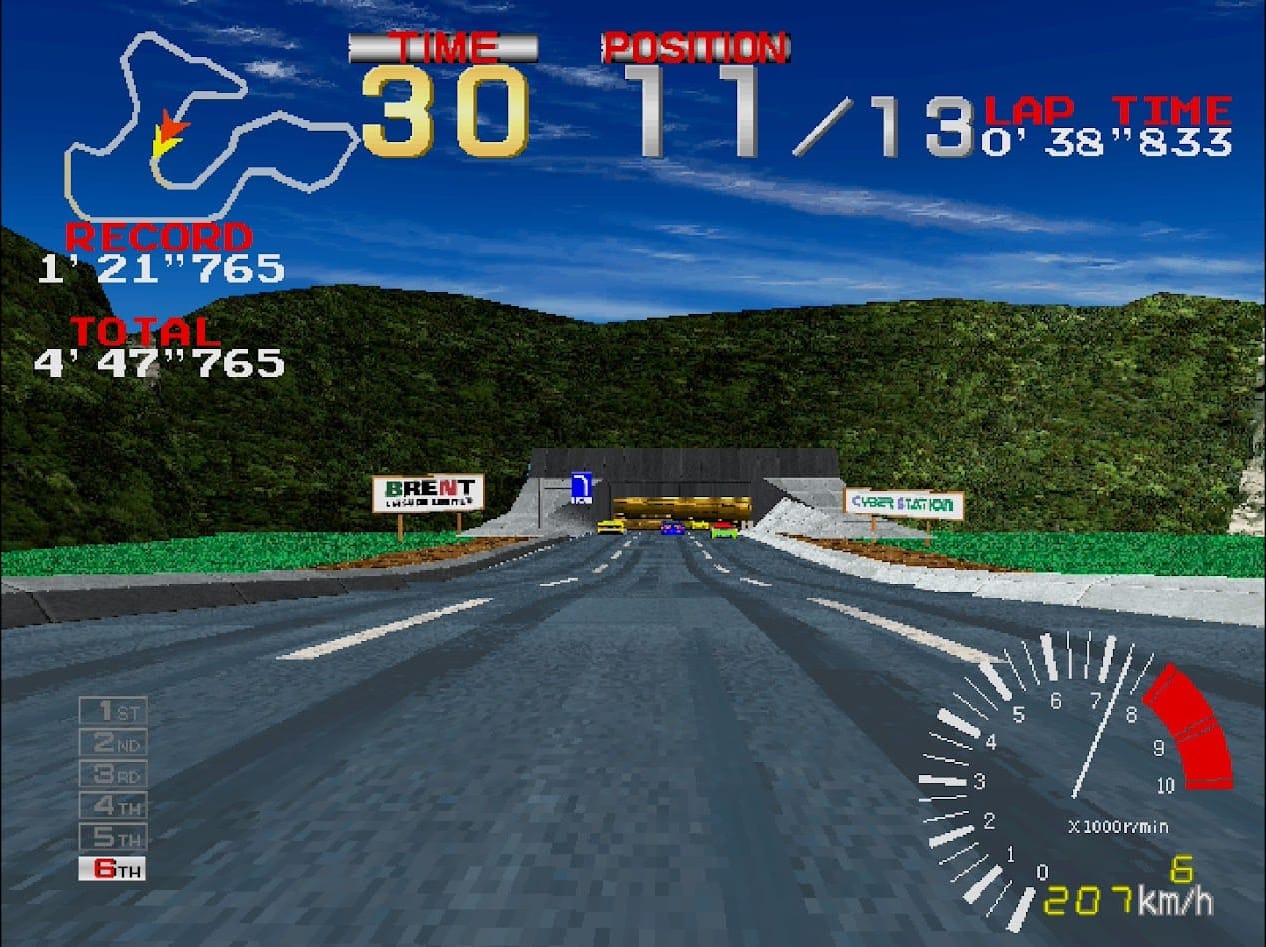
And the moment that strikes me, replaying the original Ridge Racer, is when your car hits a speed bump on the road and jumps.
This high-speed hop is exhilarating and feels real on a higher level than the games that have come before. You’ll fly a little higher based on how fast you’re going, and your car’s suspension actually bounces as the tires hit the ground. (Perhaps the arcade version of Ridge Racer only features a driver’s-eye view because the developers wanted players to feel this sensation?) You need to keep the wheel straight, or your tires will skid as you hit the ground with the accelerator on. There were certainly 2D racing games with speed bumps and hops, but this is the beginning of something else. It’s 3D physics in action.
I love the early Playstation library specifically because these concepts are new, novel, and not necessarily worked all the way out. What I'm playing is even rawer than that. In the arcade version of Ridge Racer, you see, there is only one car and one track. You can't even change the position of the camera from the default driver's-eye view. All that stuff would come in the PS1 version, but that's not what we're playing.
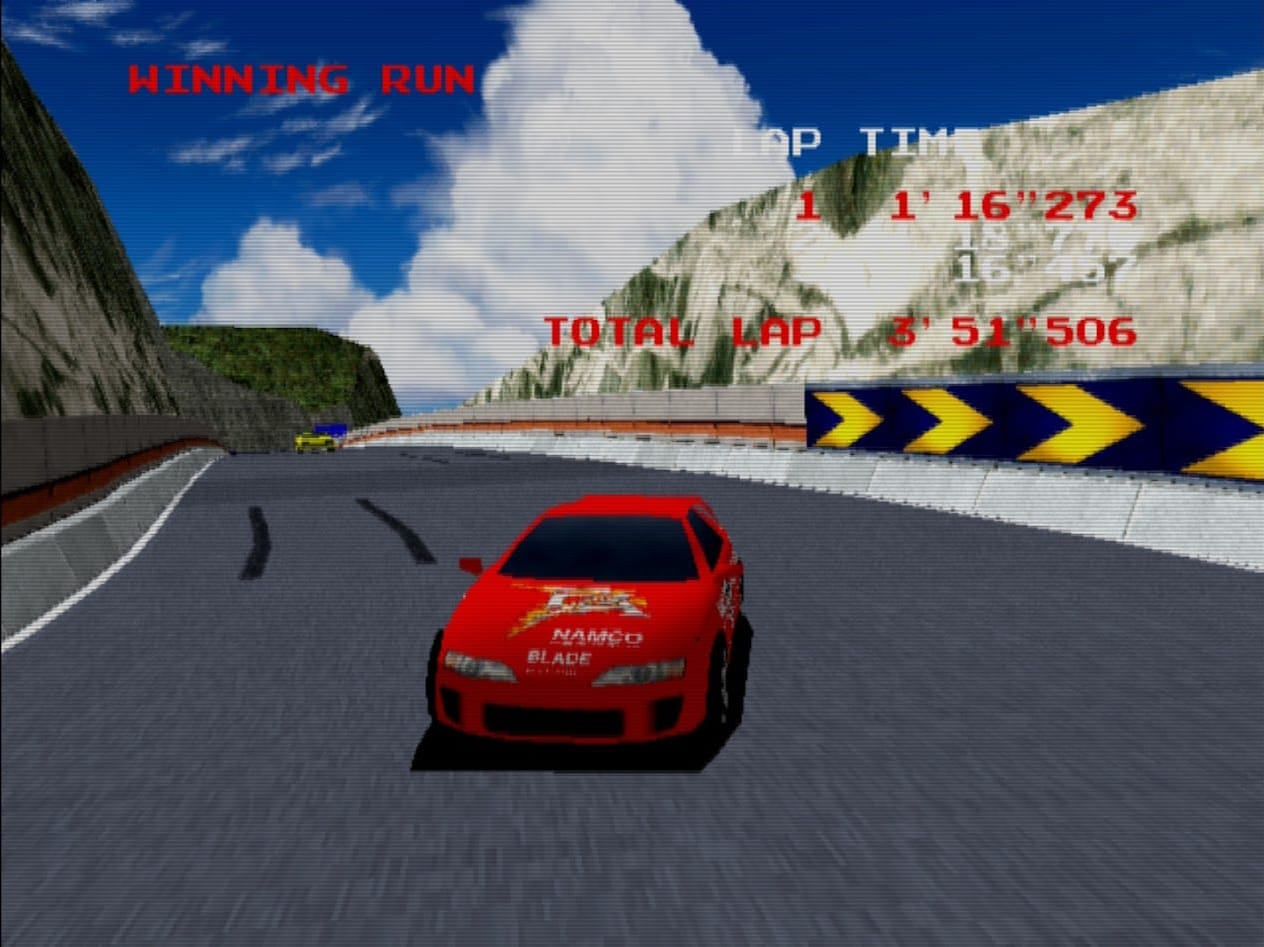
I’m playing Hamster’s port of the arcade game in their Arcade Archives 2 line, which like its predecessor is presently console exclusive. So it’s emulation of the original System 22 arcade game, which has significantly sharper and smoother graphics than the PS1 version, but lacks its extra features. (Note that the PS1-era hype of “it’s exactly the same as the arcade!” wasn’t true of this game! Tekken, yes, Ridge Racer no!) Put the two versions of the game next to each other and it’s quite noticeable.
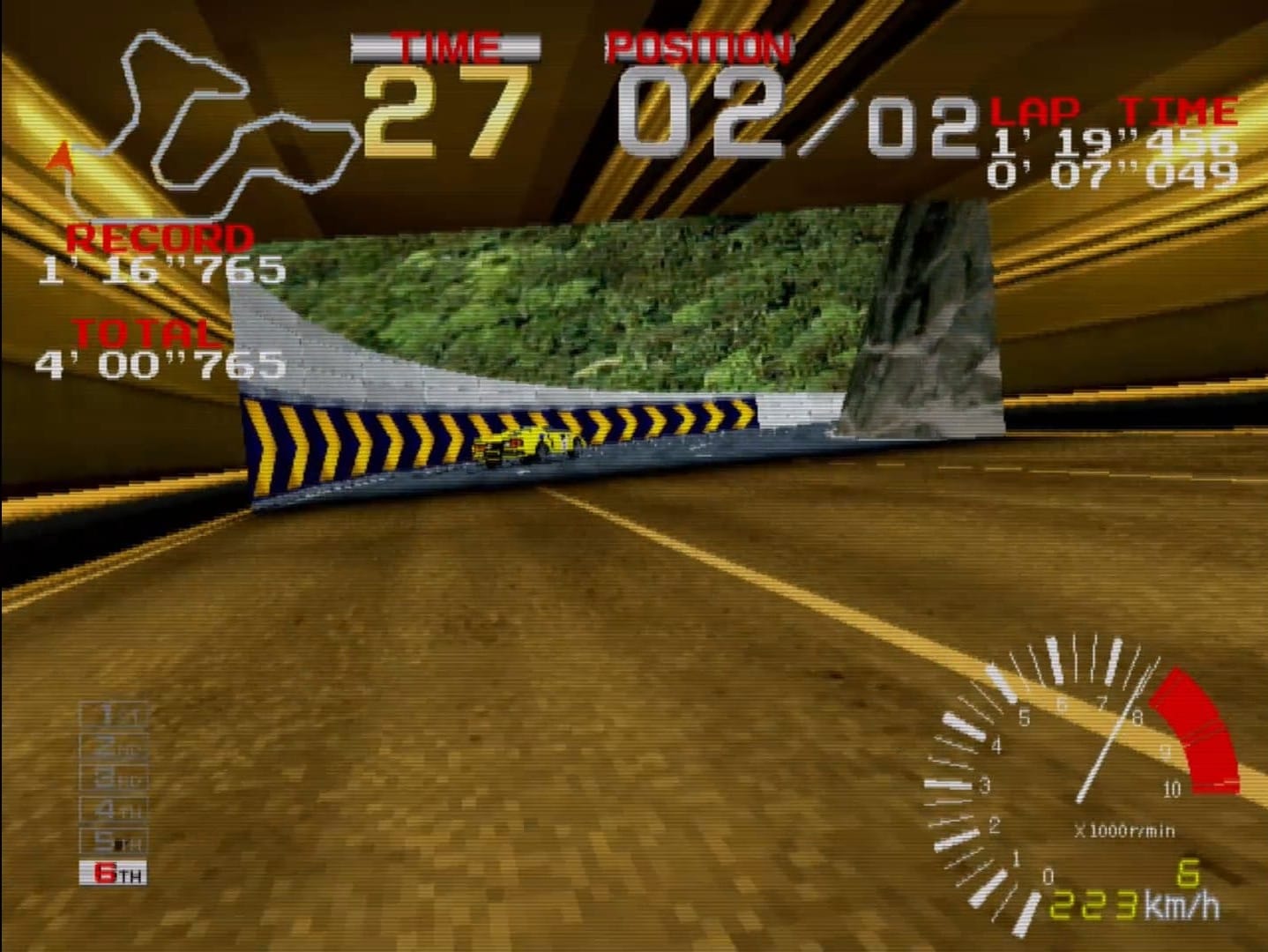
So this game has just one car driving on one track, but its progression, the way it uses every inch of what it’s got, is actually quite masterful. The track is modular, unlocking more and more of itself— along with the maximum speed of your car— as you ascend the three difficulties. The easy mode is a nice lazy drive around the city in which your car is so slow you never have to so much as let up off the gas pedal, and the intermediate mode cranks up the speed and adds a few turns that require actual cornering skills. The advanced mode opens up a severely technical passage that seems specifically designed to make your car spin out or crash into a wall, requiring masterful control to escape unscathed.
The very last test comes in the time trial, where your car is so fast that you now hit a big jump before the final corner. This is no longer a special effect but a part of the challenge: you now must land cleanly and immediately navigate two long corners at high speed, without losing control of the car.
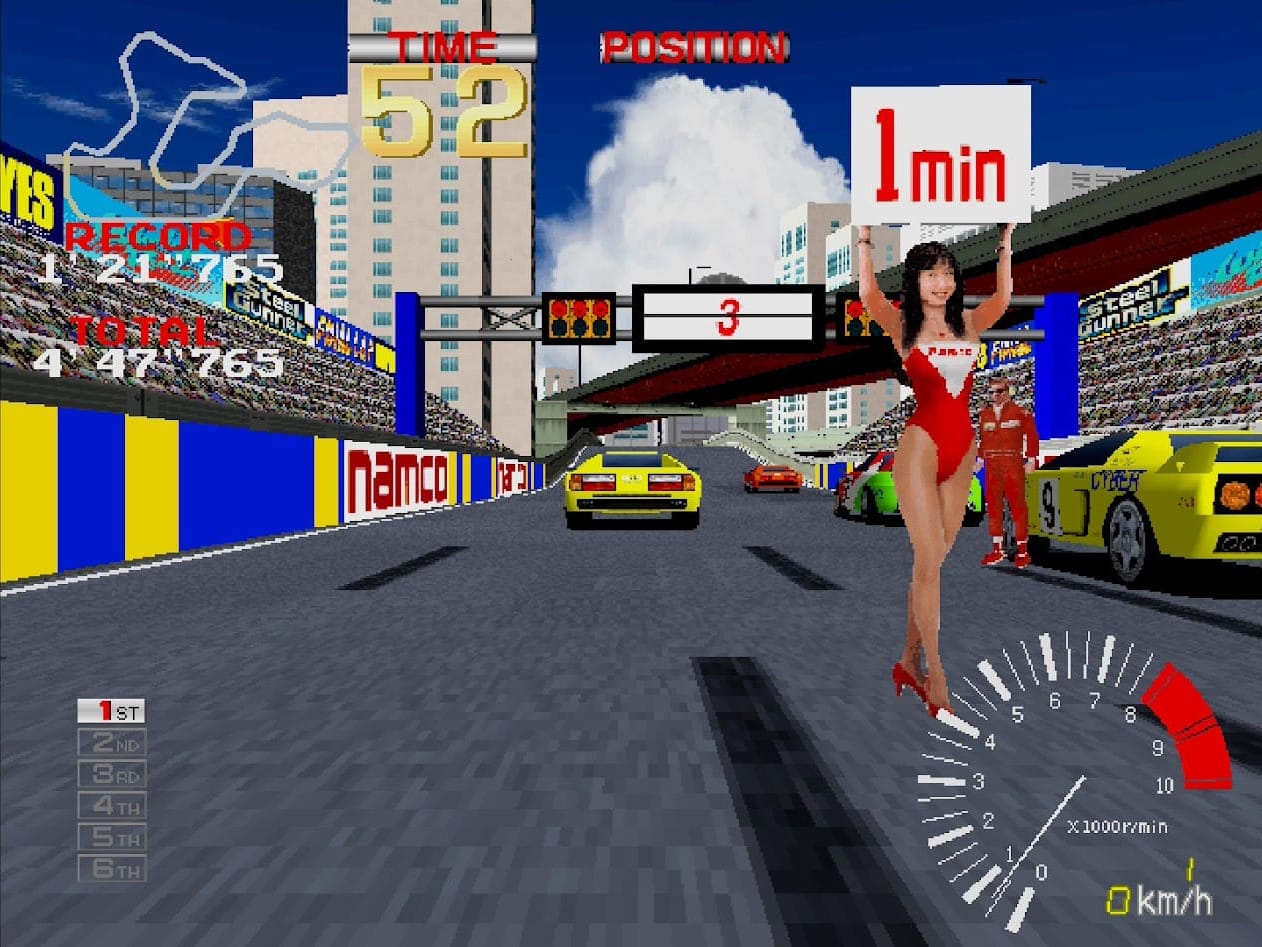
If you just want to experience the thrill of early Playstation-era 3D racing, Ridge Racer is good for about half an hour’s play. If you want to play it and master it as so many did back in the day, now you’re talking about hours and days. And good luck with the Expert track, because it’s going to take up most of that time. The Arcade Archives version features online leaderboards, so your time attack efforts do mean something. (I’m currently 122nd in Time Trial.)
As with many of these first-gen 3D proofs of concept, Ridge Racer was only meant to stick around for just long enough. Ridge Racer 2— despite the number, just a revision and not a new game— quickly replaced the original in 1994, and a true sequel arrived in 1995’s Rave Racer.
That’s why for me, there’s something really special about games in this moment. It was a wonder that they worked at all. That the core design of these games stands the test of time, that good old Ridge Racer can pull a player in just as well 30 years later, in a world where its graphics are no longer the selling point… well, that’s just miraculous, isn’t it?
Arcade Archives 2 Ridge Racer is available on Switch 2 and the other consoles.



